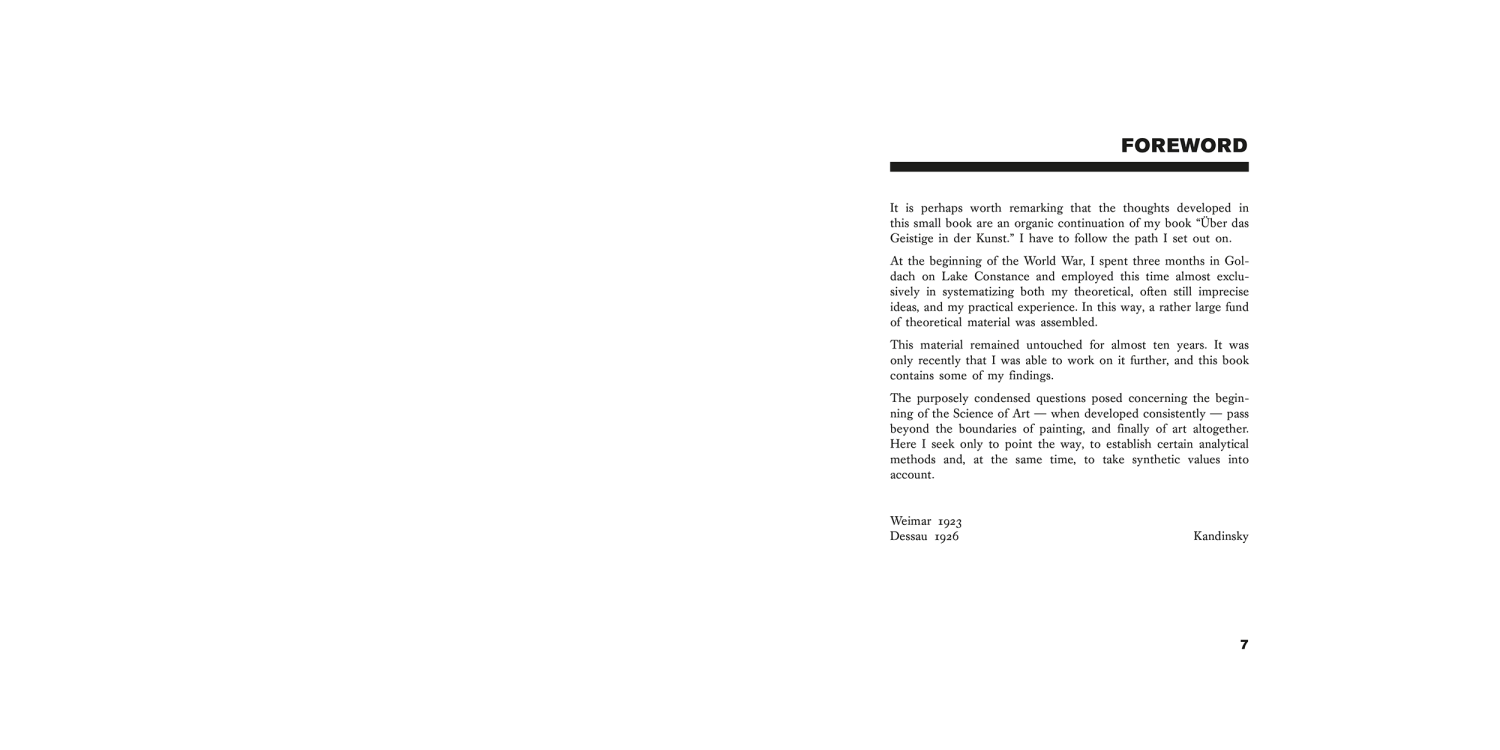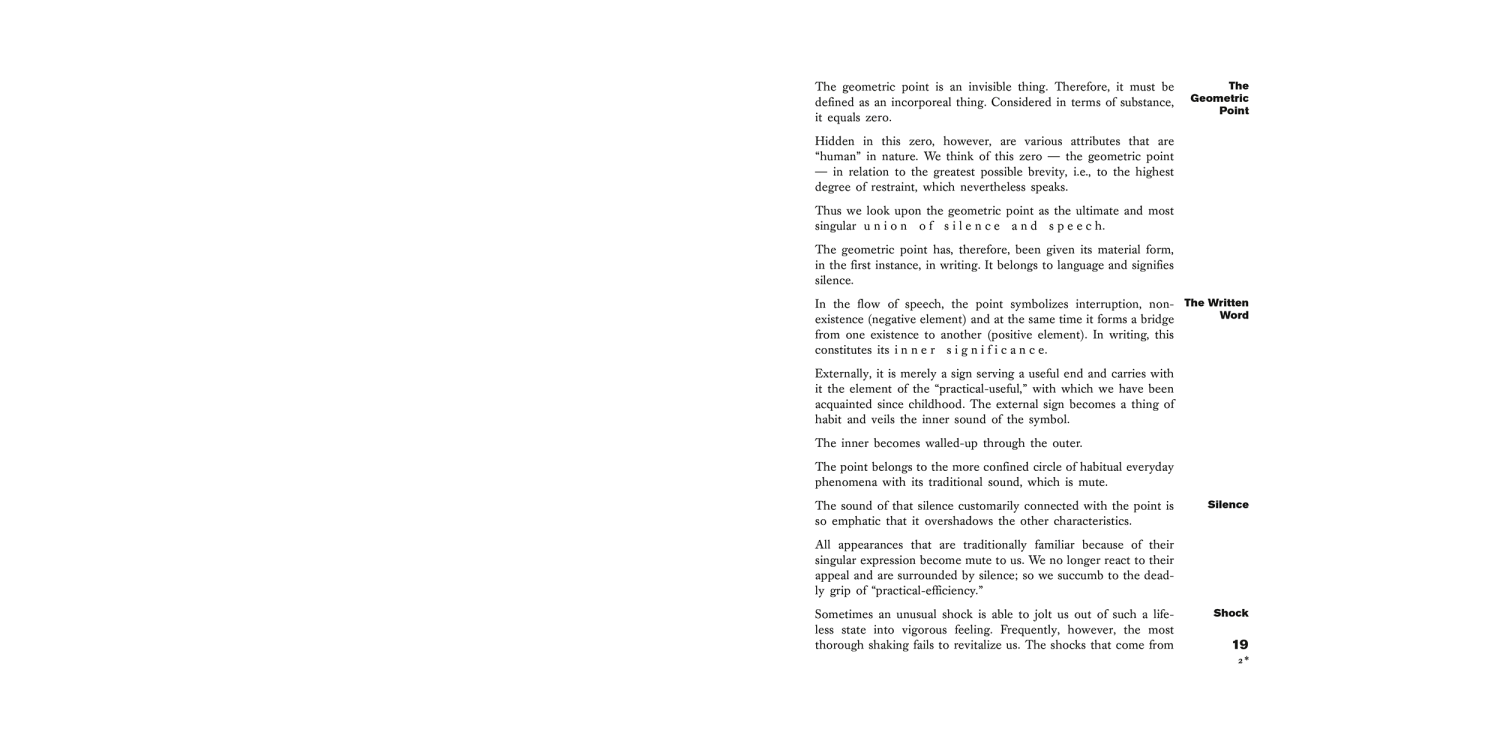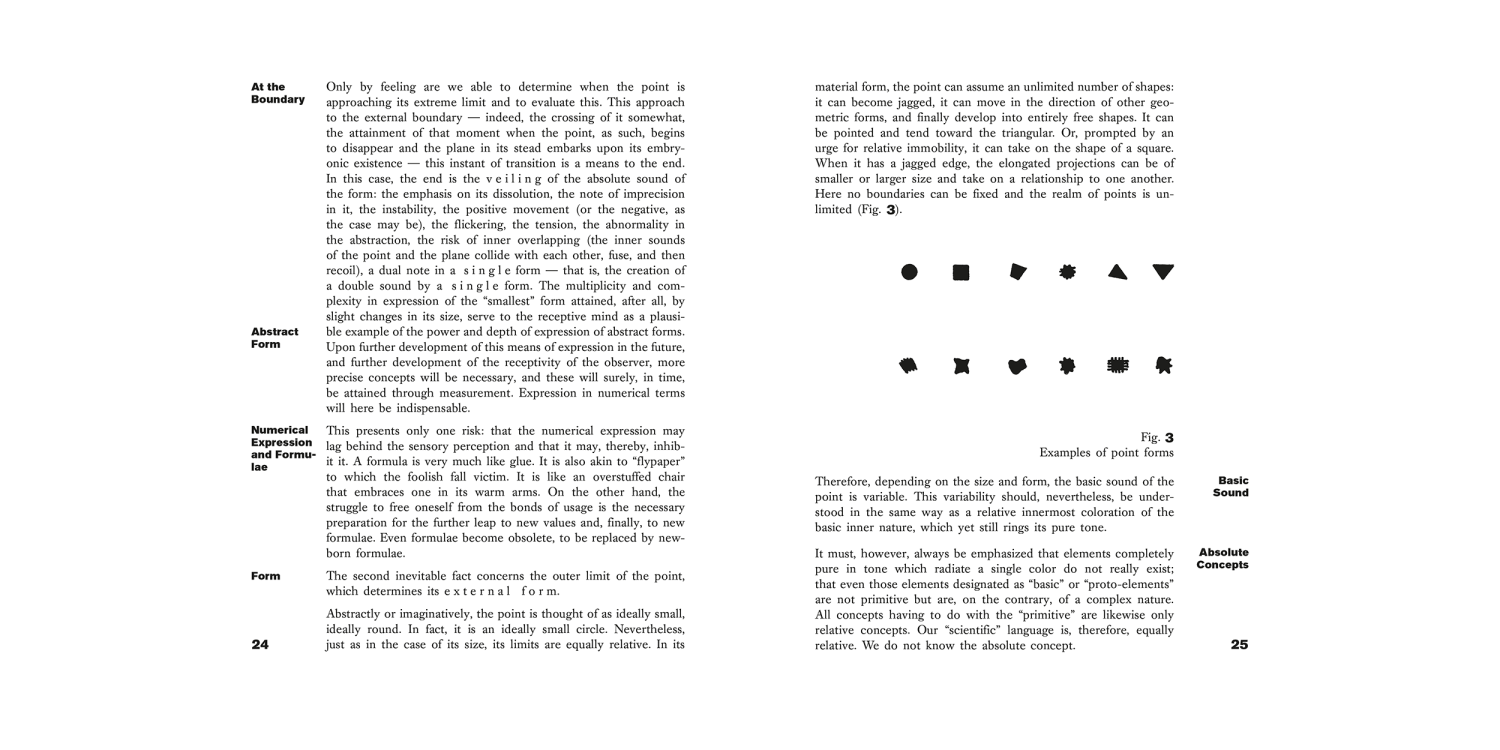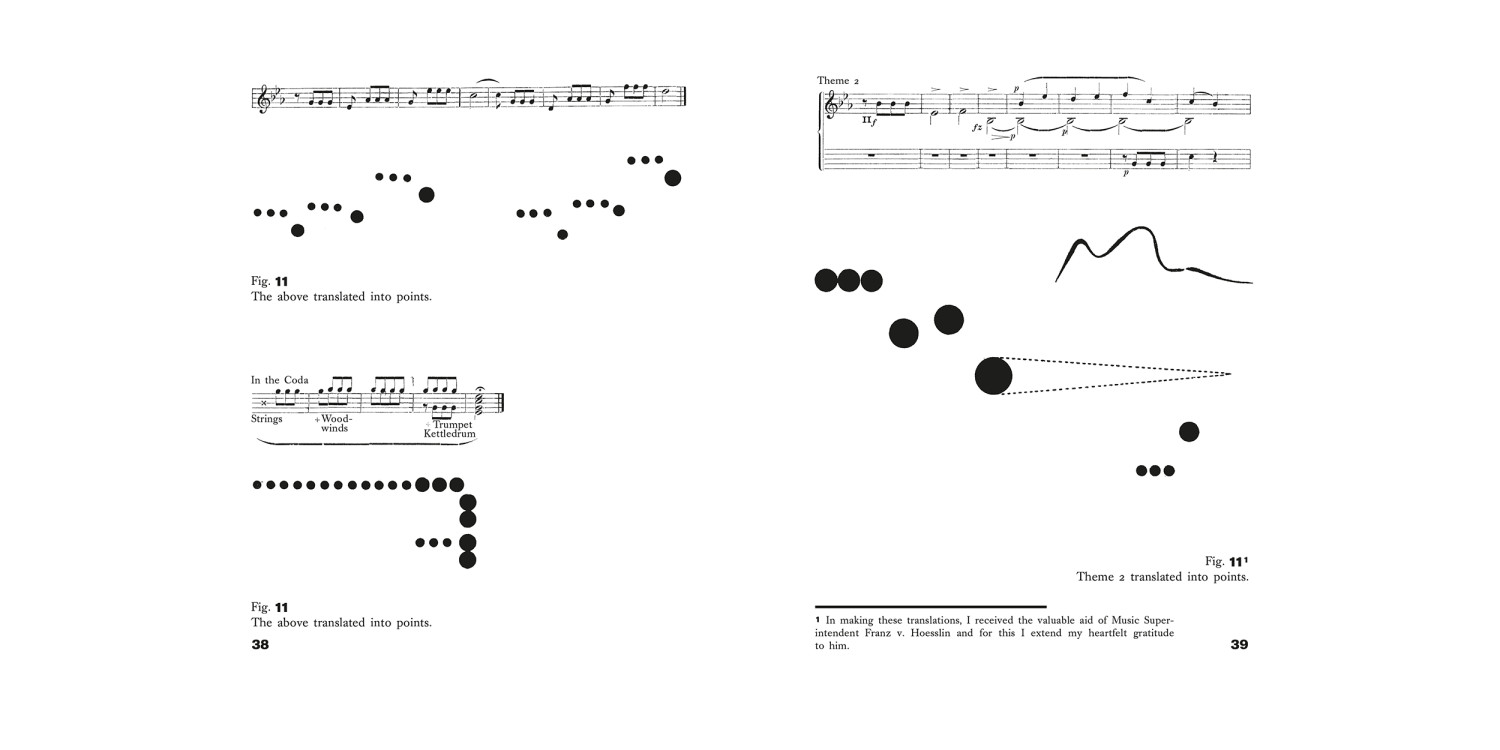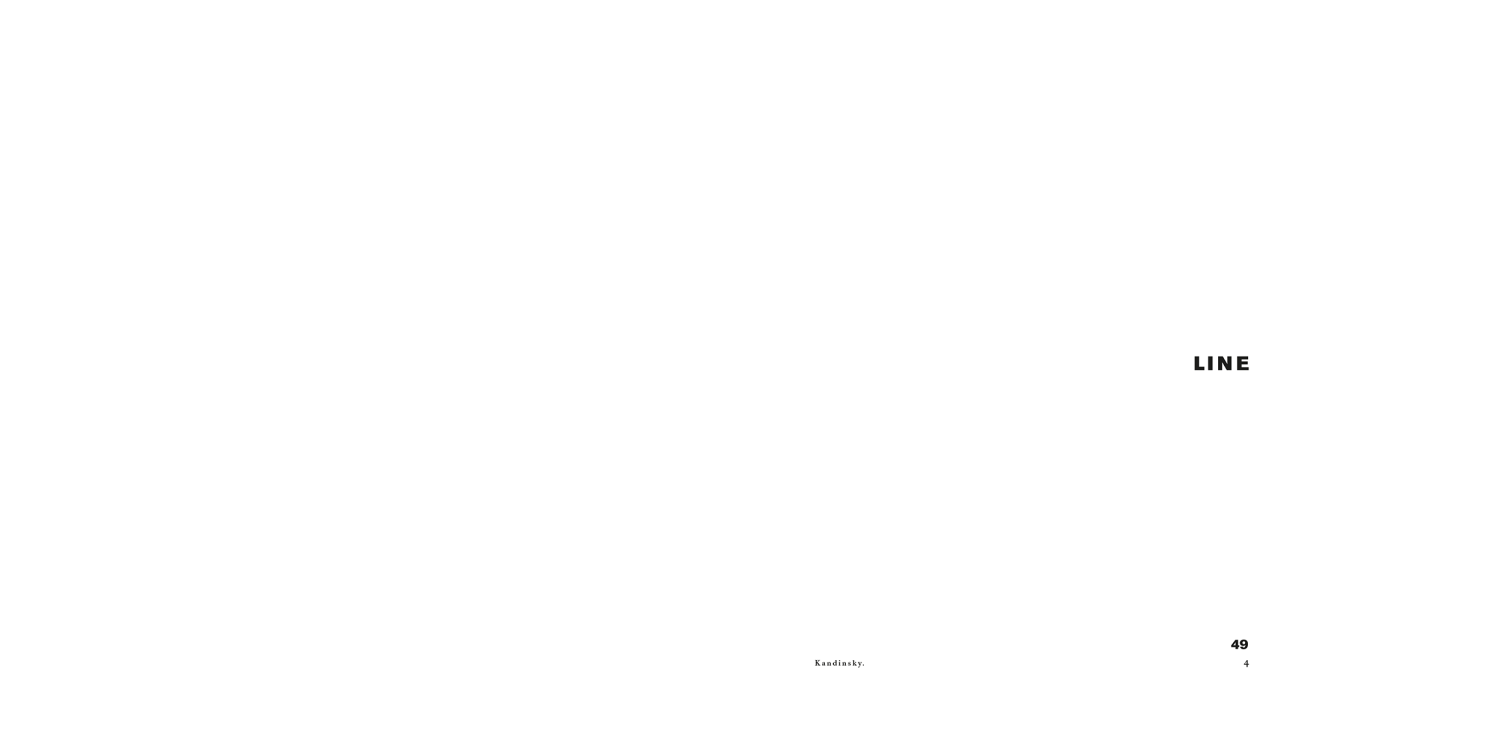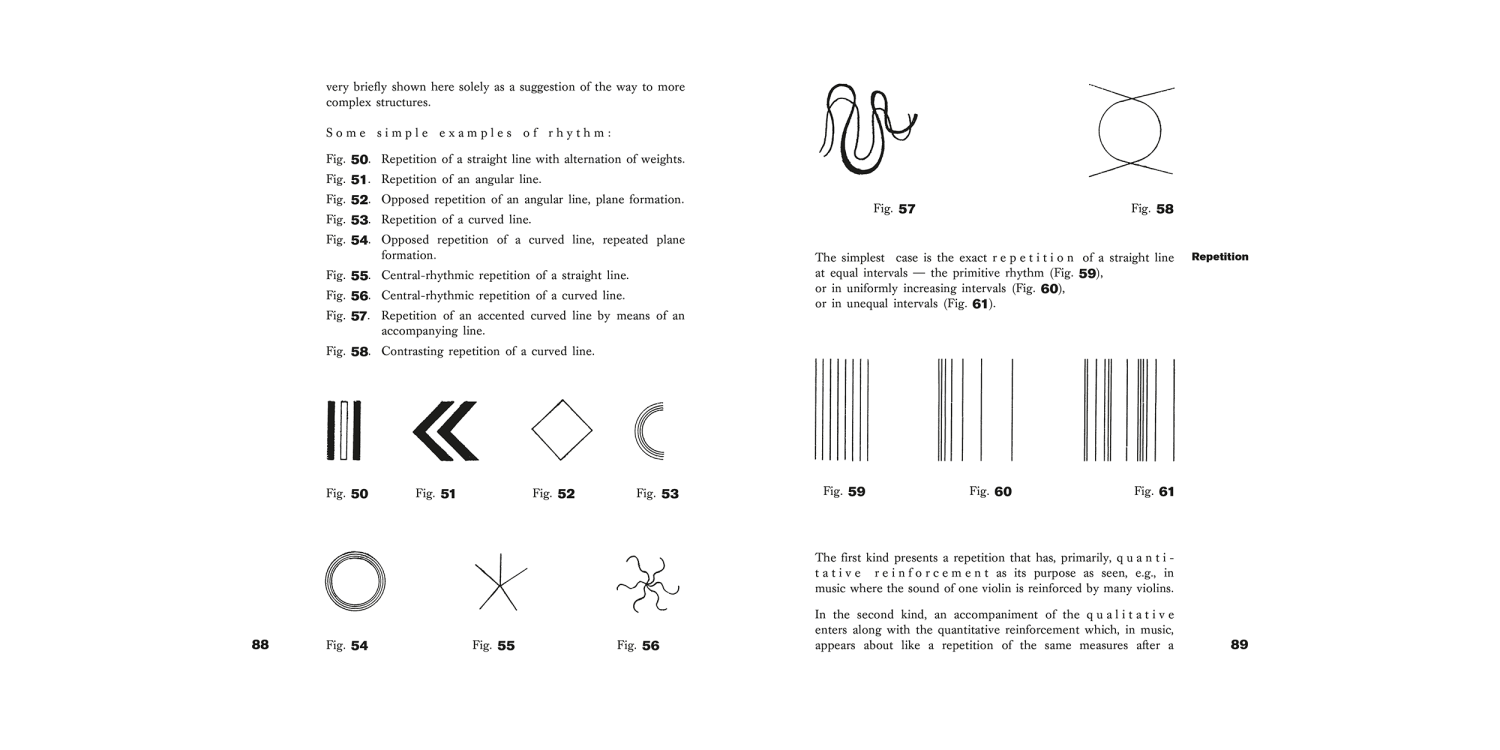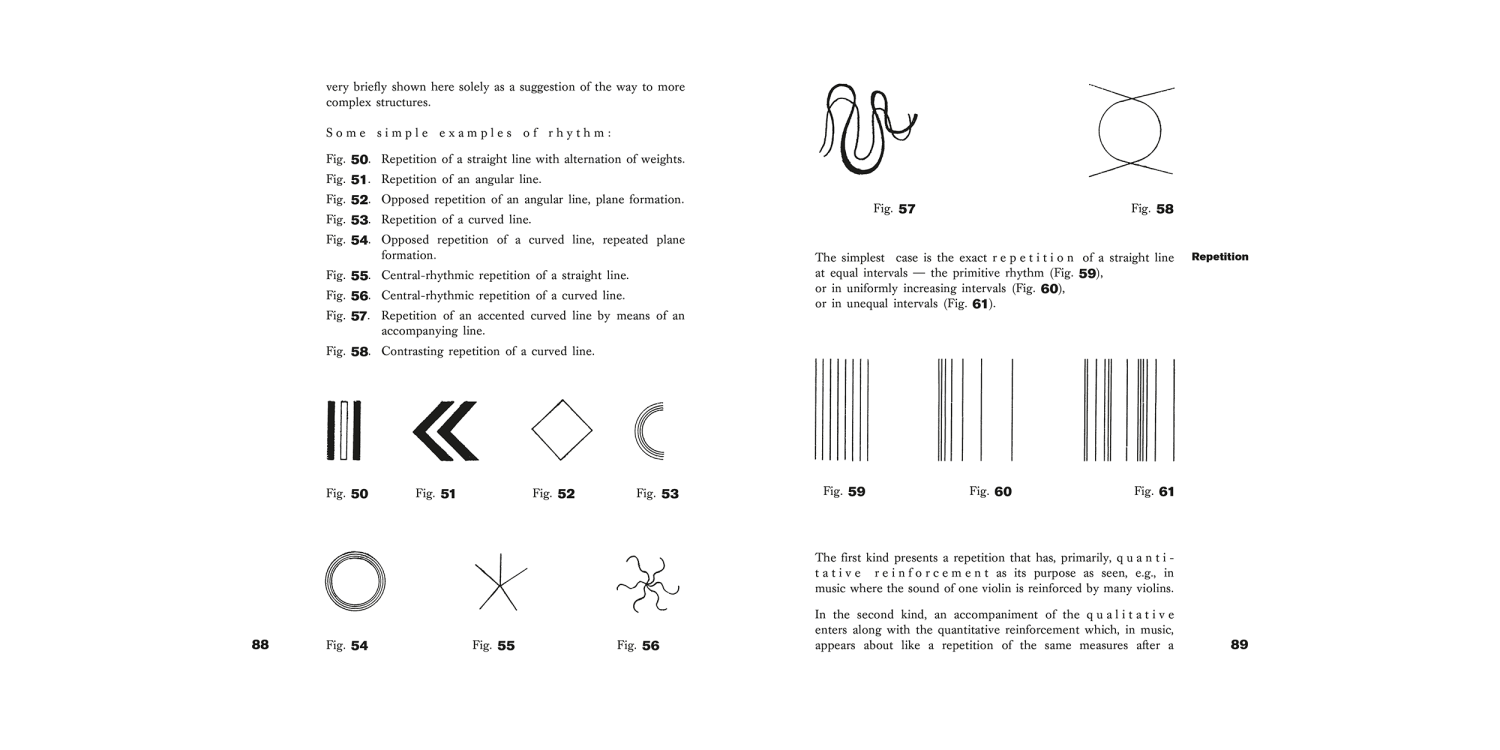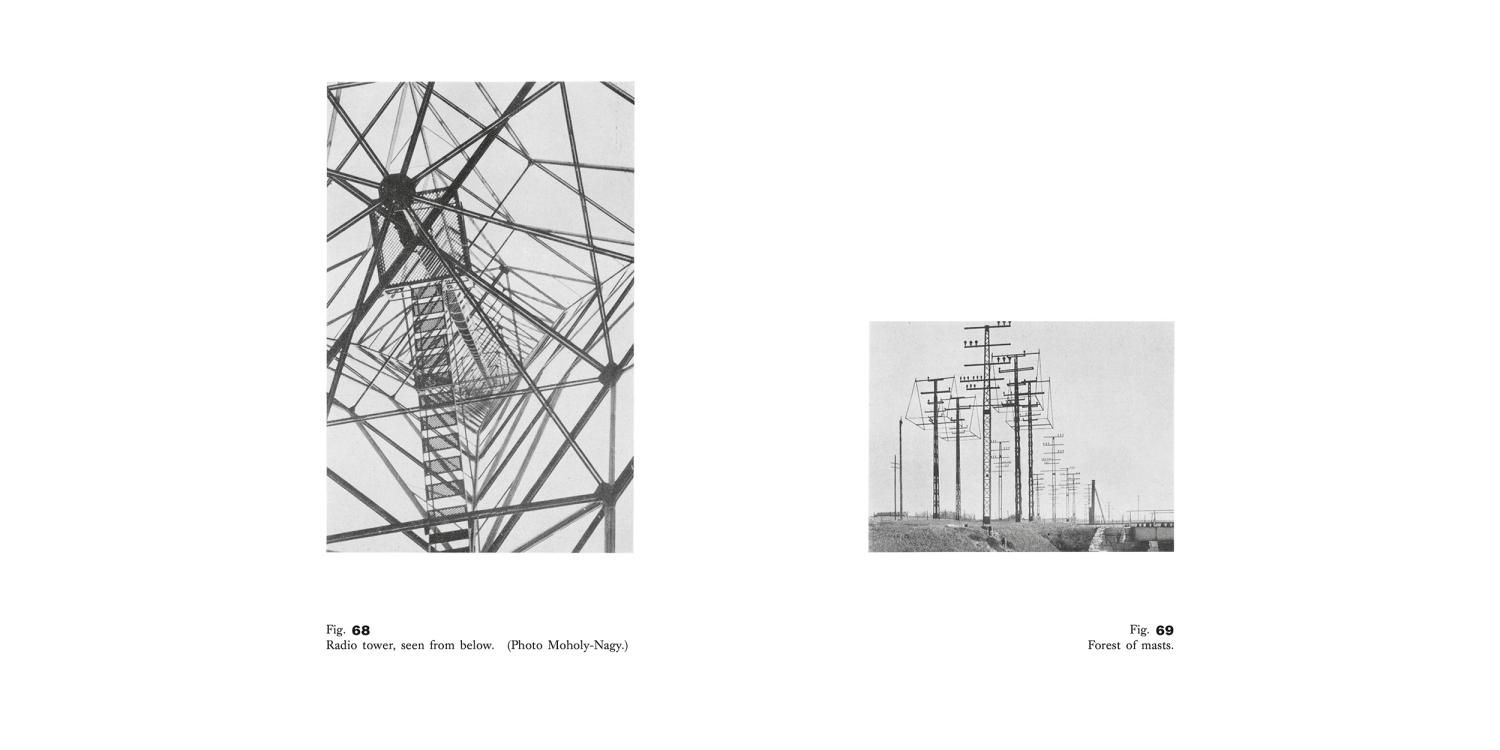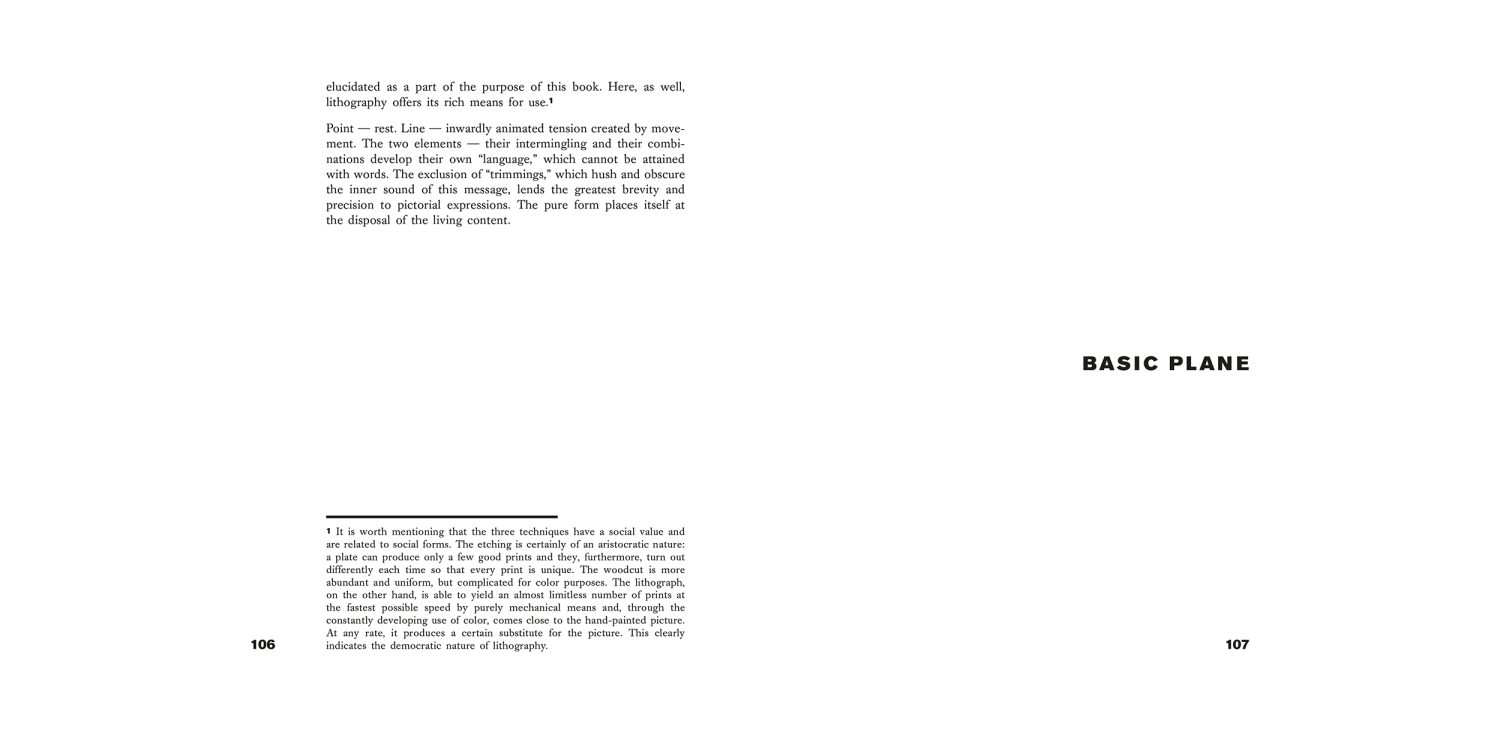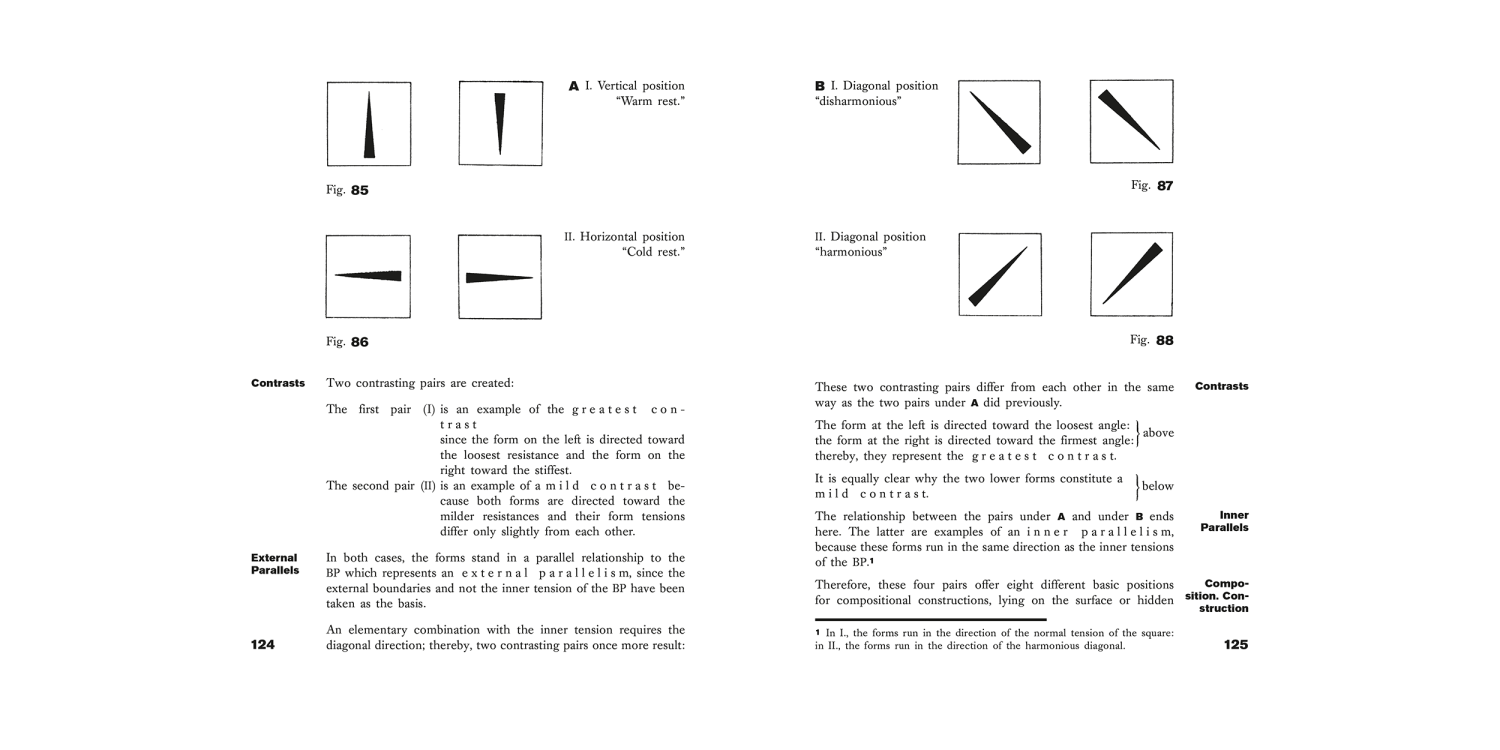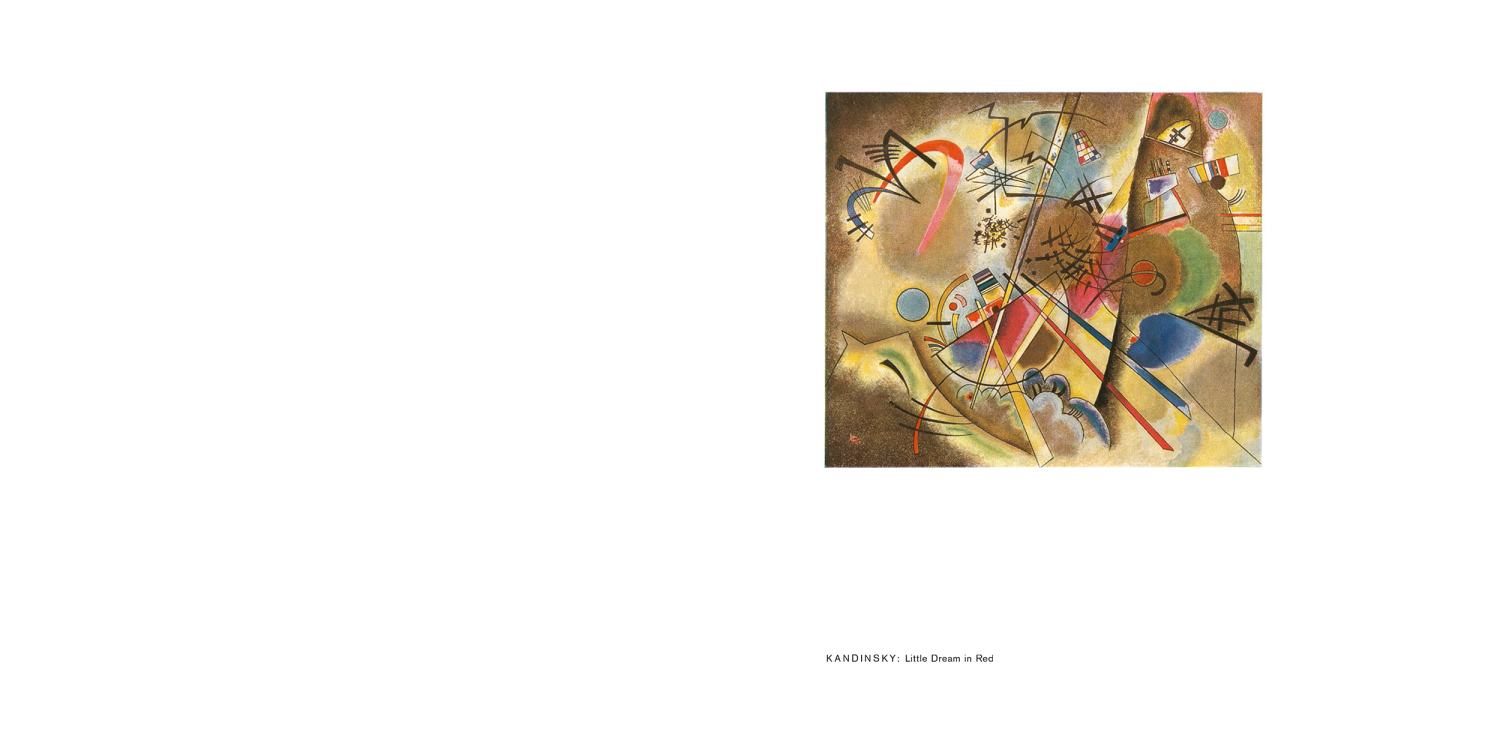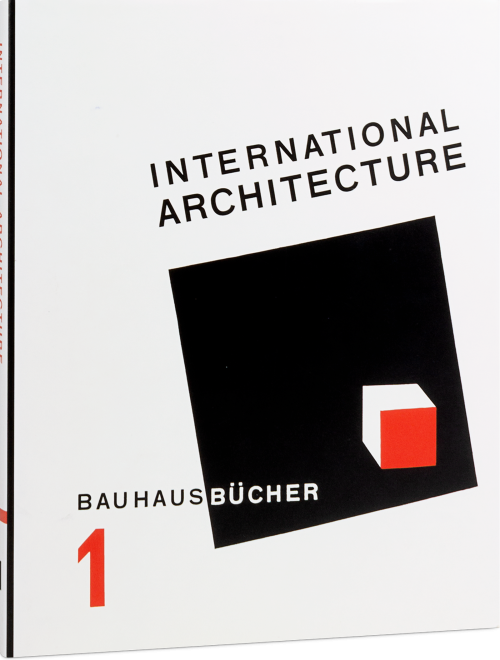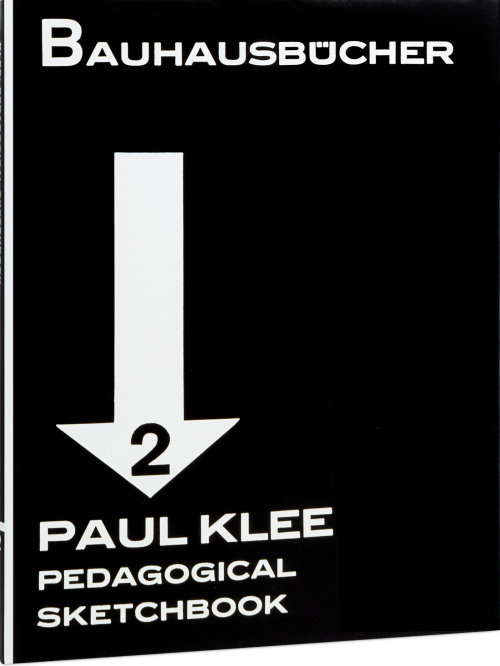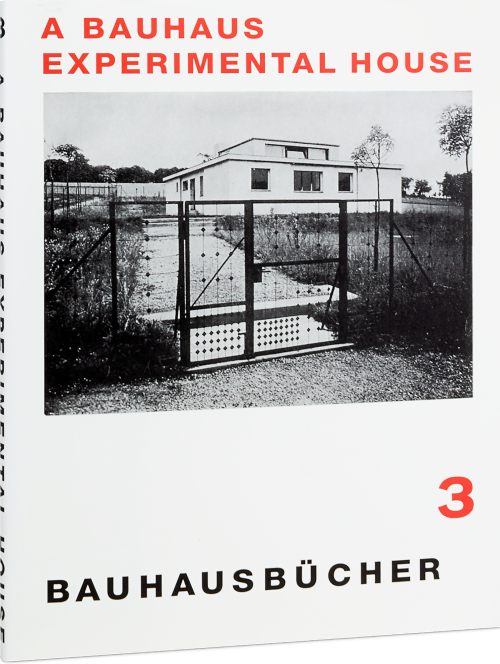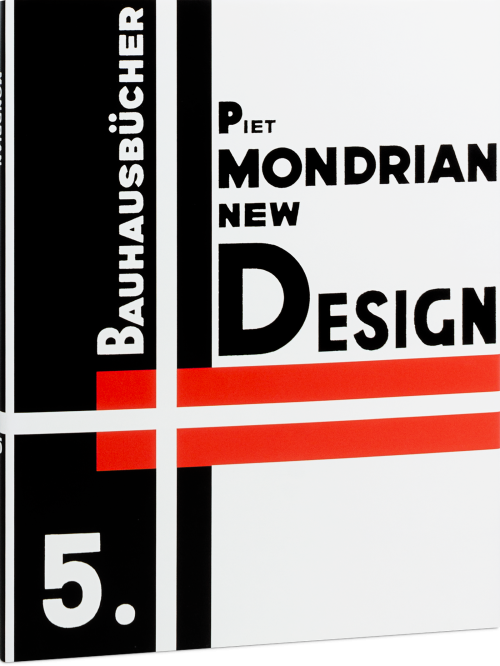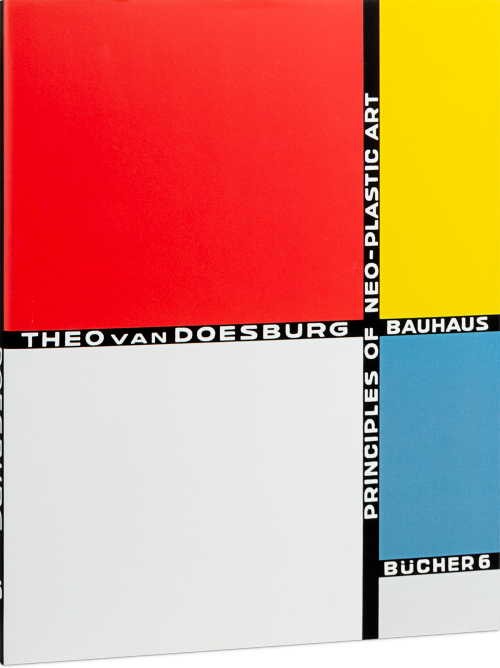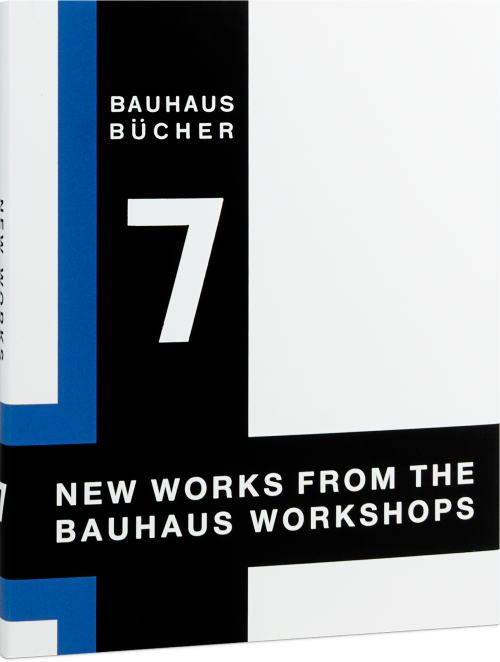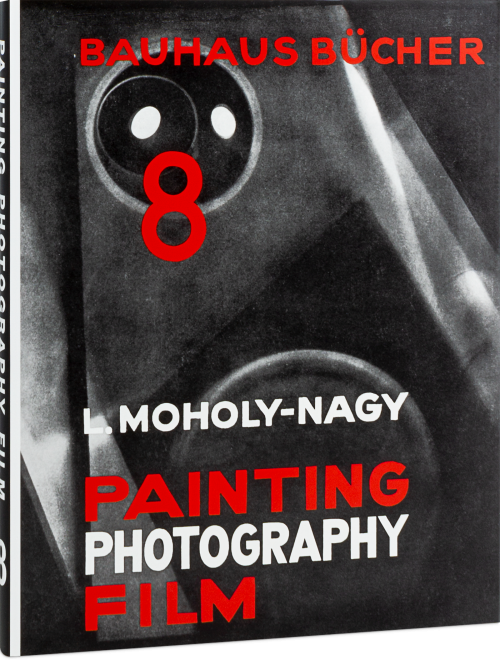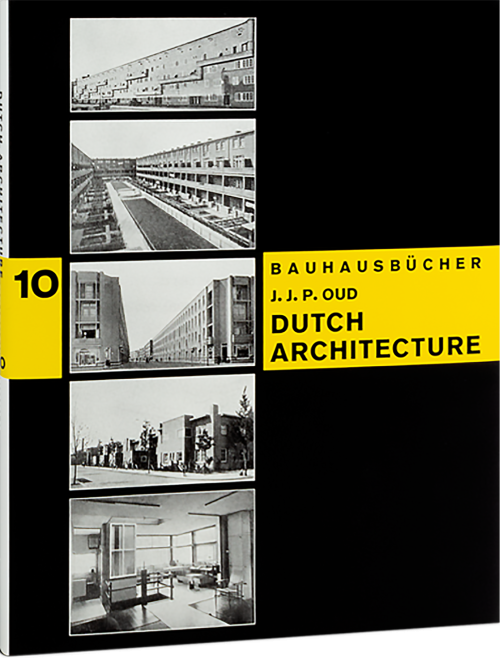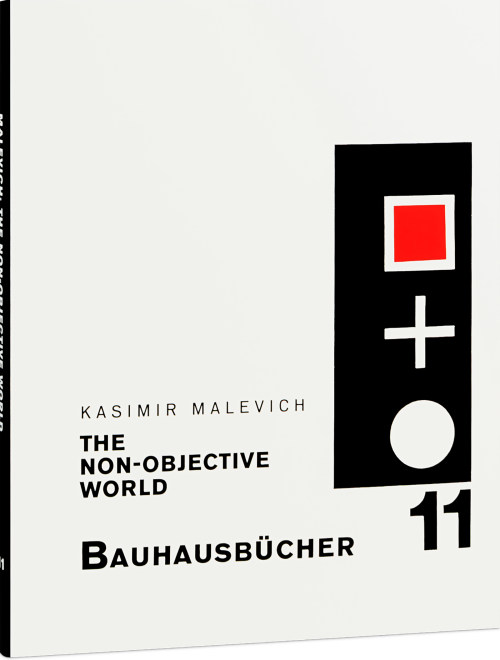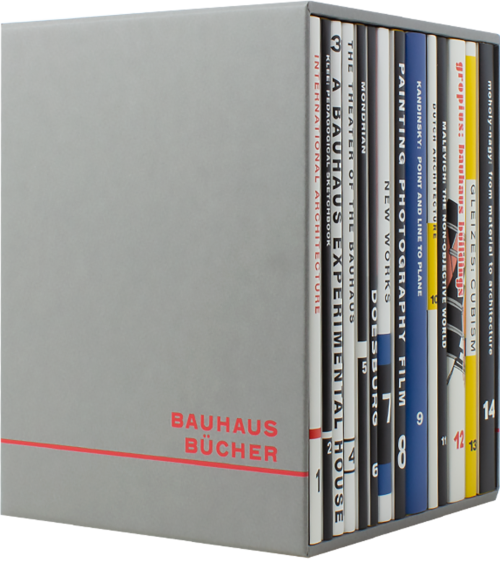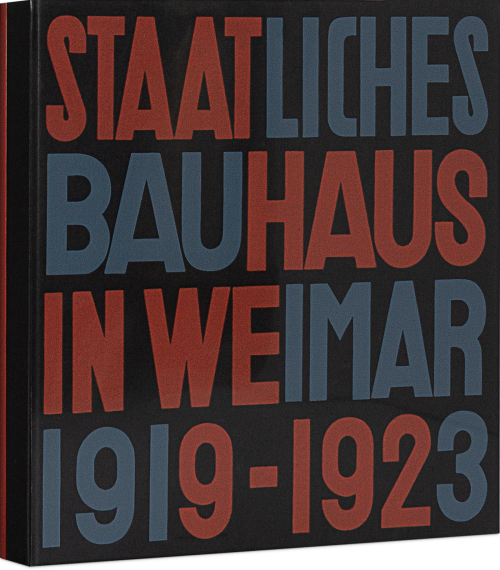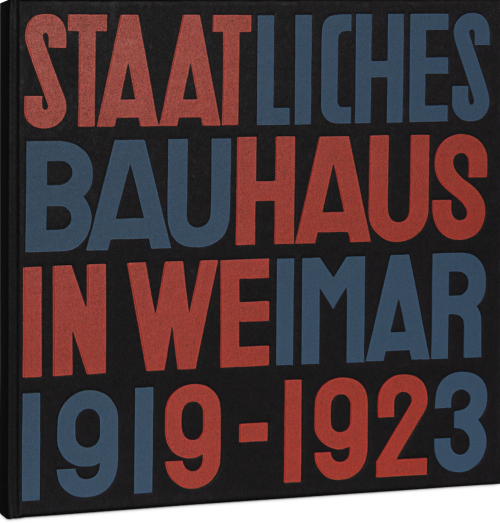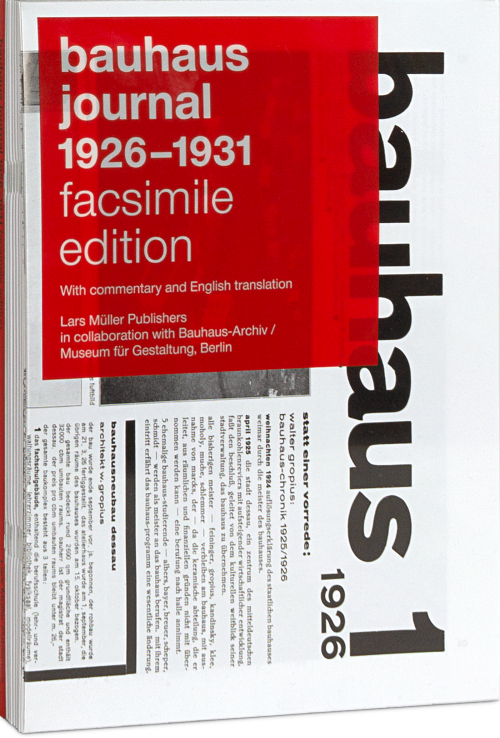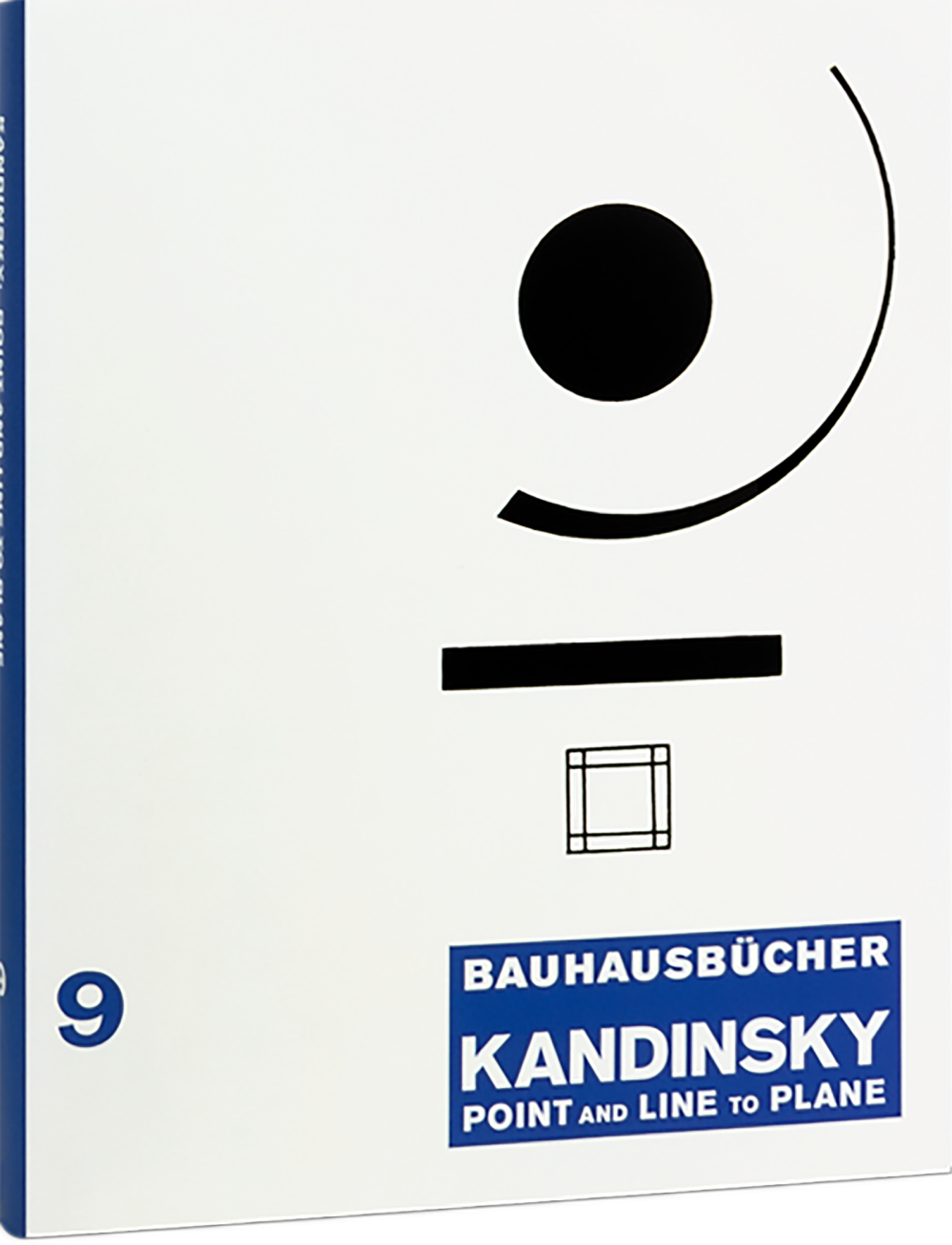
Point and Line to Plane
Point and Line to Plane, volume 9 of the Bauhausbücher series, can be seen as a continuation of Wassily Kandinsky's seminal treatise On the Spiritual in Art. Kandinsky's thesis is that different constellations of point, line and surface have different emotional effects on the viewer. Starting from the point (which represents the most concentrated and minimal graphic form), he understands all painterly forms as being a play of forces and counterforces: of contrasts.
Kandinsky's essay can be read as an aesthetic analysis of form and its effect on the viewer. Based on the various effects of linear elements on our mood, Kandinsky attempts to develop an order of form types. Here, he offers an approach to a theory of the effects of form, which makes volume 9 one of the most important writings on art theory of the 20th century and it can still be understood as contemporary today.
The series is published with the generous support of the Rudolf-August Oetker-Stiftung.
Point and Line to Plane, volume 9 of the Bauhausbücher series, can be seen as a continuation of Wassily Kandinsky's seminal treatise On the Spiritual in Art. Kandinsky's thesis is that different constellations of point, line and surface have different emotional effects on the viewer. Starting from the point (which represents the most concentrated and minimal graphic form), he understands all painterly forms as being a play of forces and counterforces: of contrasts.
Kandinsky's essay can be read as an aesthetic analysis of form and its effect on the viewer. Based on the various effects of linear elements on our mood, Kandinsky attempts to develop an order of form types. Here, he offers an approach to a theory of the effects of form, which makes volume 9 one of the most important writings on art theory of the 20th century and it can still be understood as contemporary today.
The series is published with the generous support of the Rudolf-August Oetker-Stiftung.
